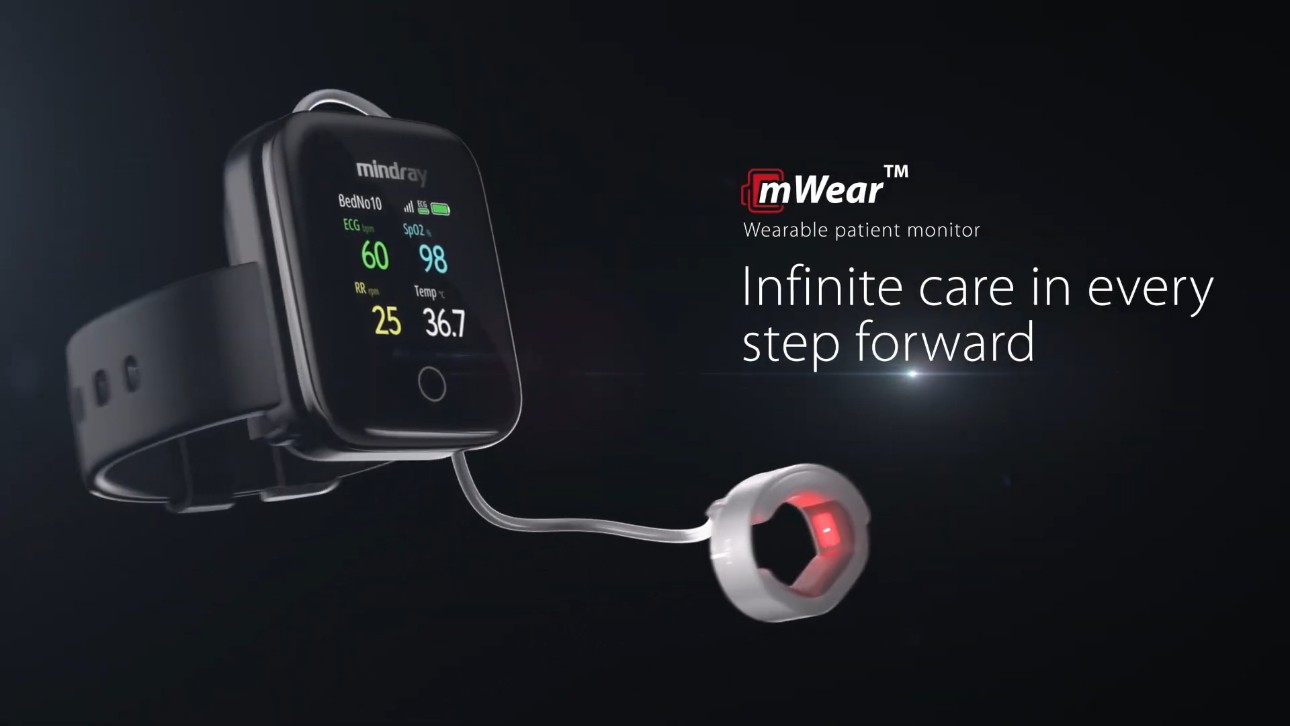of 1855 patients who died before hospital discharge were not admitted to critical care at any stage after surgery [1].
Wearable devices provide a safer and more comfortable monitoring experience, but their accuracy and usability, and the reliability and security of wireless signal transmission can bring great challenges to clinical application.
To meet these challenges, Mindray has developed the mWear wearable patient monitor. With simple clinical application in multiple scenarios, mWear provides accurate, comprehensive monitoring data.

Medical-grade Wearable Monitoring
A refined design and medical-grade algorithm give mWear the ability to enhance patient safety.
Refined design
- Comfortable to wear
- Complete wireless interconnectivity
Reliable design
- IP22 Waterproof
- Resistant to 48 kinds of disinfectants
Medical-grade monitoring
- Multi-parameter monitoring
- Innovative health parameters
Ring SpO2 sensor
- Normal hand movement with greater comfort

Rising to the challenge
Wearable devices are well accepted by patients, and clinical staff have called for increased accuracy and usability of such devices. [3].

Rising to the challenge
Wearable devices are well accepted by patients, and clinical staff have called for increased accuracy and usability of such devices.[3].
Smooth Workflow
How can we make wearable devices easier to use for patients and clinical staff? Informed by real clinical needs, Mindray is tackling these challenges in three ways:

- Pairing through a single touch
- Patient information auto bound through PDA scanning

- Long duration: at least 48 hours
- Replace the battery with a single hand
- Centralized charging design. Clear charging instruction
- Large volume storage
Monitoring Preparation

- Pairing through a single touch
- Patient information auto bound through PDA scanning
Patient Monitoring
Charging & Device Management

- Long lasting: at least 48 hours battery life
- Replace the battery with a single hand
- Centralised charging. Clear charging instruction
- Large volume storage
Reliable and Accessible IT Solution
Homehospital application*
mWear also extends to the home through the App so that patients are safely monitored at home.
- Dedicated app design
- App sends the data back to the central station in hospital for unified management of patient data in the ward
- Independent charging pod

* Will go online on 2023.01.01
Accessible IT Solution
mWear uses the same centralised monitoring system whether the patient is in hospital or at home. All data can be displayed, analysed, and sent to the 3rd-party EPR via Mindray's standard interface for a more comprehensive picture of patient health.

[1] Pearse R M, Rui P M, Bauer P, et al. Mortality after surgery in Europe: a 7 day cohort study[J]. Lancet, 2012, 380(9847): 1059-1065.
[2] Technical algorithm patent No.: EP 18921425.7, PCT/CN2018/088982
[3] Leenen JPL, Dijkman EM, van Dijk
JD, et al.Feasibility of continuous monitoring of vital signs in surgical patients on a general ward: an observational cohort study. BMJ Open 2021;11:e042735.











